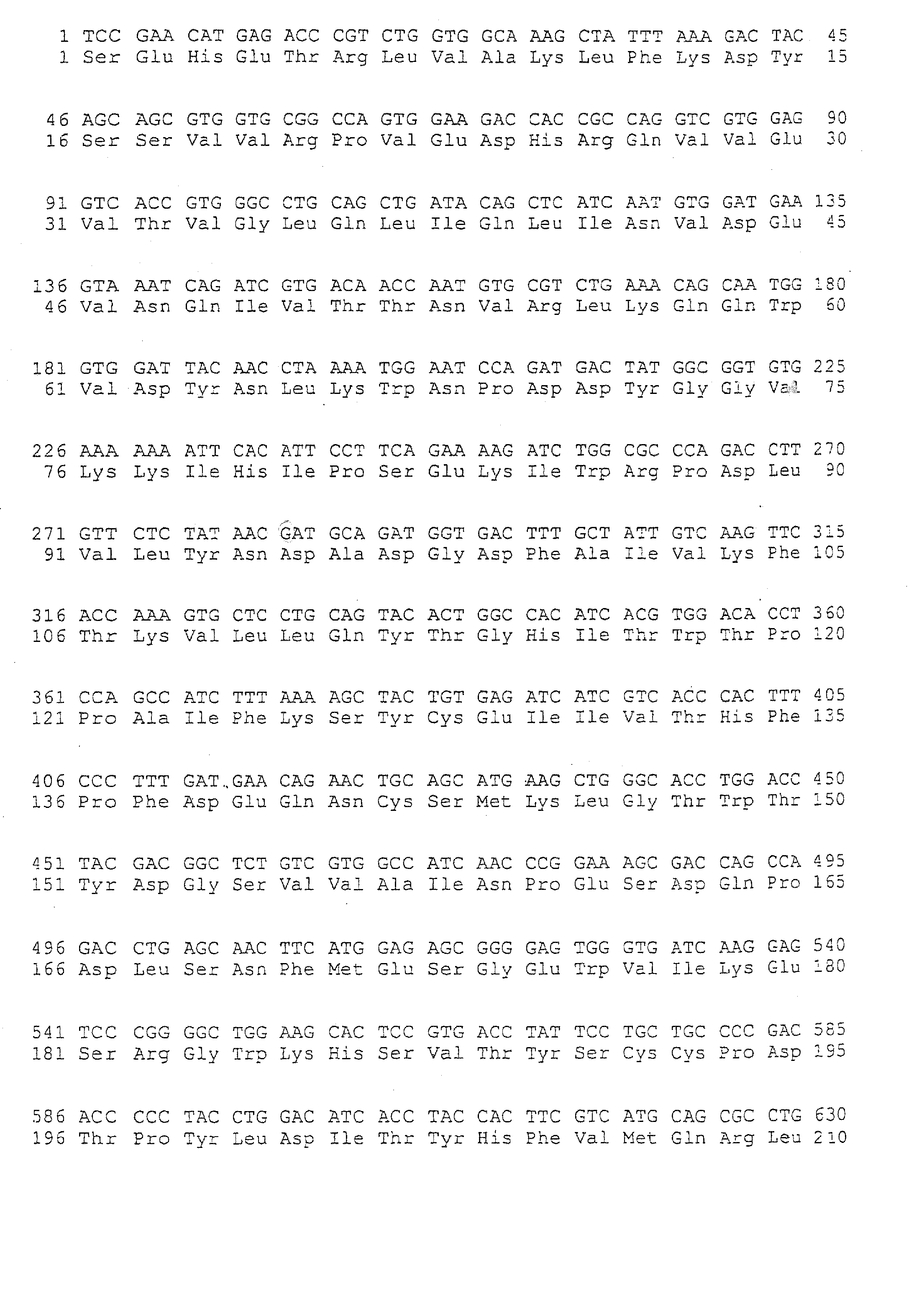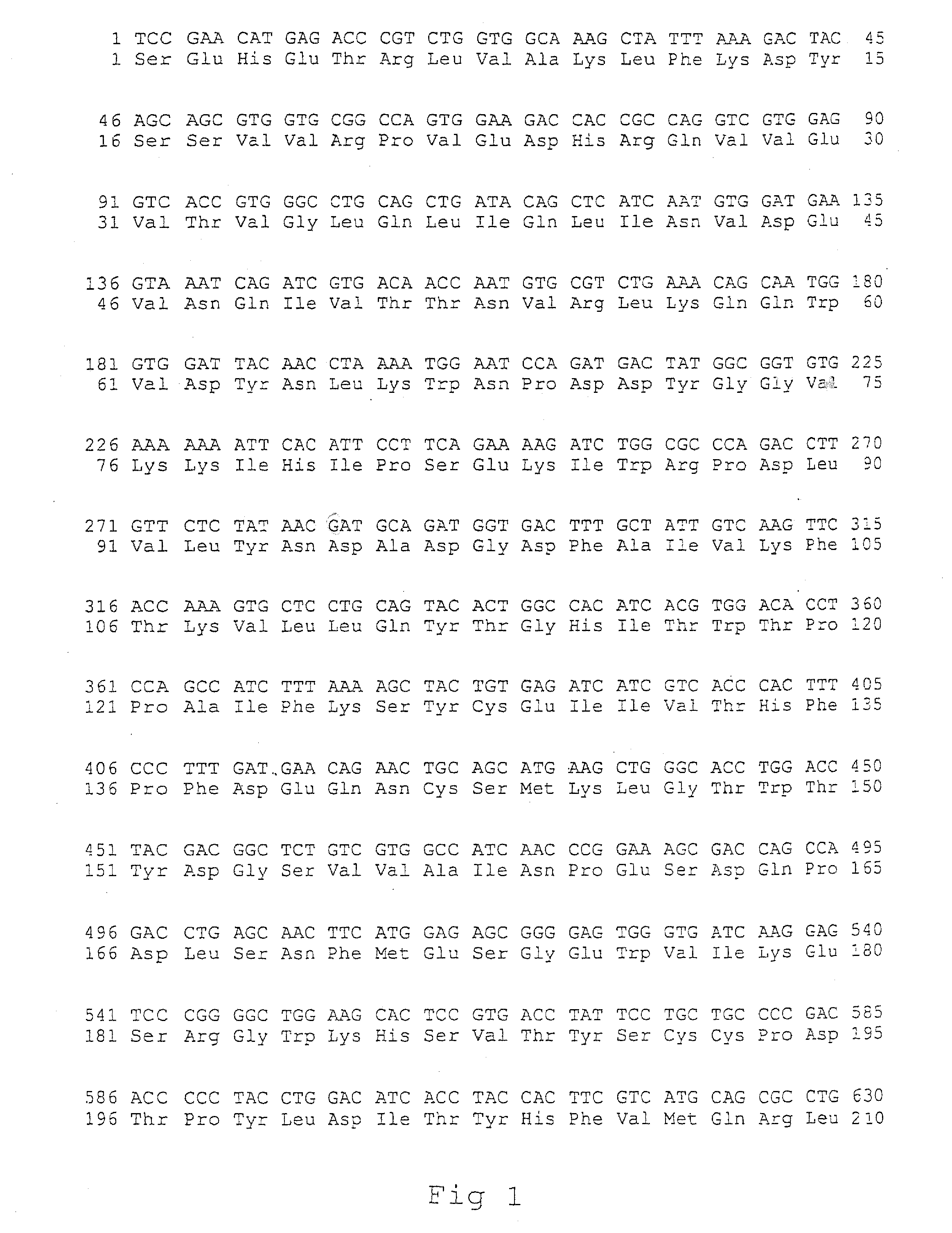Recombinant fragments of the human acetylcholine receptor and their use for treatment of myasthenia gravis
a technology of acetylcholine receptor and recombinant fragments, which is applied in the field of polypeptides, can solve the problems of autoimmune response, inability to readily obtain antigens, and only partially successful experiments with synthetic peptides and mimotopes, so as to suppress the disease, modulate the autoimmune response to achr, and modulate the course of eamg
- Summary
- Abstract
- Description
- Claims
- Application Information
AI Technical Summary
Benefits of technology
Problems solved by technology
Method used
Image
Examples
example 1
Materials and Methods
i) Monoclonal Antibodies (mAb)
[0126] The following monoclonal antibodies were used: mAb directed towards the main immunogenic region (MIR) of the extracellular portion of the hAchR α-subunit (Sophianos and Tzartos, 1989): mAb 198, mAb 195 and mAb 202 elicited in rats against human muscle AChR, and mAb 35 elicited in rats against electric eel AChR, but cross-reacted with AChR from other species, including human; and mAb 5.5 directed towards the binding site of AChR from other species, including human (Mochly-Rosen and Fuchs, 1981), elicited in mouse against Torpedo AChR.
ii) Antibody Binding Assays
[0127] Binding of antibodies to AChR or to recombinant polypeptides corresponding entirely or partially to the extracellular domain of the hAChR α-subunit was analyzed by ELISA. Wells of microtiter plates (Maxisorb, Nunc, Neptune, N.J.) were coated by incubation overnight at 4° C. with either Torpedo AChR (1 μg in 100 μl of phosphate-buffered saline (PBS)), or with...
example 2
[0164] The present inventors demonstrated in Example 1 that oral or nasal administration of recombinant fragments of the acetylcholine receptor (AChR) prevents the induction of experimental autoimmune myasthenia gravis (EAMG) and suppresses ongoing EAMG in rats. The present inventors have now studied in the experiments described in this example the role of spatial conformation of these recombinant fragments in determining their tolerogenicity. Two fragments corresponding to the extracellular domain of the human AChR α-subunit and differing in conformation were tested: Hα1-205 expressed with no fusion partner and Hα1-210 fused to thioredoxin (Trx-Hα1-210). The conformational similarity of the fragments to intact AChR was assessed by their reactivity with α-bungarotoxin and with anti-AChR mAbs, specific for conformation-dependent epitopes. Oral administration of the “more native” fragment, Trx-H1α-210, at the acute phase of disease led to exacerbation of EAMG, accompanied by an elevat...
PUM
| Property | Measurement | Unit |
|---|---|---|
| Fraction | aaaaa | aaaaa |
| Mass | aaaaa | aaaaa |
| Mass | aaaaa | aaaaa |
Abstract
Description
Claims
Application Information
 Login to View More
Login to View More - R&D
- Intellectual Property
- Life Sciences
- Materials
- Tech Scout
- Unparalleled Data Quality
- Higher Quality Content
- 60% Fewer Hallucinations
Browse by: Latest US Patents, China's latest patents, Technical Efficacy Thesaurus, Application Domain, Technology Topic, Popular Technical Reports.
© 2025 PatSnap. All rights reserved.Legal|Privacy policy|Modern Slavery Act Transparency Statement|Sitemap|About US| Contact US: help@patsnap.com



